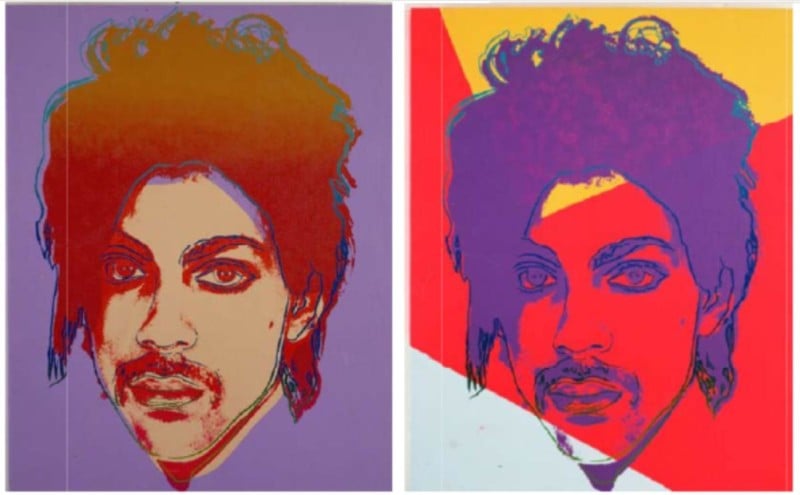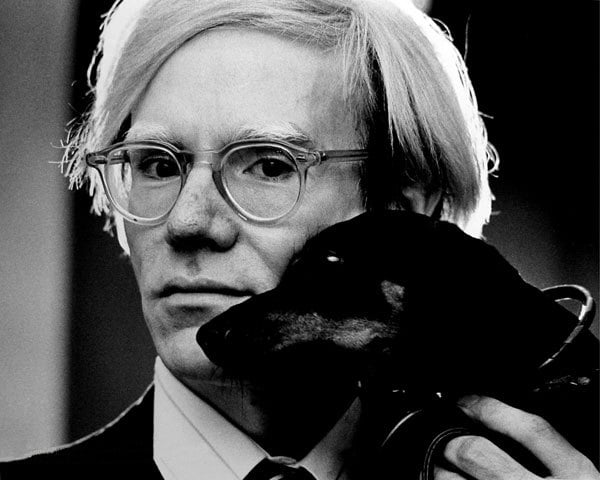Photographer Wins Copyright Battle Over Warhol’s Use of Her Photo
![]()
A U.S. appeals court has ruled in favor of photographer Lynn Goldsmith in her copyright dispute over how Andy Warhol had used her portrait photo of Prince.
2nd Circuit Judge Gerard E. Lynch notes that “crucially, the Prince Series retains the essential elements of the Goldsmith Photograph without significantly adding to or altering those elements.”
In 1984 Vanity Fair licensed one of Goldsmith’s photos of Prince shot on Dec 1981 for $400 to create an illustration of Prince to be used in an article “Purple Fame.”
Vanity Fair did not inform Goldsmith that the photo was being used by Warhol as a reference, and she did not see the article when it was initially published.
Goldsmith was also unaware that Warhol had created 15 additional artworks based on her black & white studio photograph. This was known as the “Prince Series” and included 14 silkscreen prints (12 on canvas, 2 on paper) and 2 pencil drawings.

On April 21, 2016, at the age of 57, Prince died of an accidental overdose at his home and recording studio in Minnesota. He had sold 150 million records worldwide, which put him among the best-selling music artists of all time.
The very next day, on April 22, Condé Nast, which is Vanity Fair’s parent company, contacted the Andy Warhol Foundation (AWF). They were interested in producing a commemorative issue on Prince and wanted to use the 1984 image.
Condé Nast obtained a license and published the tribute magazine, which carried a Prince Series image on an orange background on the cover in May 2016. The image was credited to the Foundation, and there was no mention of Goldsmith in the attribution.
Goldsmith first became aware of the Prince Series and the other images only after the cover was published. She informed AWF in late July 2016 that the artwork had infringed on her copyright.
In November 2016, Goldsmith had her Prince’s photo registered with the copyright office as an unpublished work.
On April 7, 2017, AWF launched a “preemptive strike” against Goldsmith by suing her before she had a chance to file a copyright infringement lawsuit first.
In a January 2015 Facebook post, Goldsmith wrote, “It is a crime that so many ‘artists’ can get away with taking photographers’ images and painting on them or doing whatever to them without asking permission of the ‘artist’ who created the image in the first place.”
This statement from Goldsmith likely prompted AWF to file its suit against Goldsmith in a Manhattan federal court, suspecting that she was planning on a copyright infringement case in the future. AWF was trying to make a claim for non-infringement or, as an alternative, fair use.

Warhol is known for blatantly using and modifying other artists’ works to create his own pieces. He even boasted that art “is anything you can get away with.”
It was then that Goldsmith countersued, but the verdict did not go in her favor. On July 1, 2019, the district court ruled in favor of AWF in its fair-use claim.
The court used the four statutory fair-use factors set forth in 17 U.S.C. § 107 to come to its decision:
- The Prince Series was transformative as Goldsmith’s photo shows Prince “not a comfortable person,” the Prince Series shows the singer as an “iconic, larger-than-life figure.”
- The court accepted that the Goldsmith photo was creative and unpublished, which is in her favor. However, this was “of limited importance because the Prince Series works are transformative works.”
- In creating the Prince Series, Warhol “removed nearly all [of] the [Goldsmith] [P]hotograph’s protectable elements.”
- The Prince Series works “are not market substitutes that have harmed – or have the potential to harm – Goldsmith.”
According to U.S. District Judge John G. Koeltl in Manhattan, Warhol’s versions of Goldsmith’s original photograph had completely “transformed” the meaning of the original image into several recognizable “Warhols.”
“The humanity Prince embodies in Goldsmith’s photograph is gone,” said Judge Koeltl. “Moreover, each Prince series work is immediately recognizable as a ‘Warhol’ rather than as a photograph of Prince — in the same way, that Warhol’s famous representations of Marilyn Monroe and Mao are recognizable as ‘Warhols,’ not as realistic photographs of those persons.”
Goldsmith appealed the above ruling, and now she has had it overturned in her favor.
“[W]e feel compelled to clarify that it is entirely irrelevant to this analysis that ‘each Prince Series work is immediately recognizable as a Warhol’,” the appeals court points out. “Entertaining that logic would inevitably create a celebrity-plagiarist privilege; the more established the artist and the more distinct that artist’s style, the greater leeway that artist would have to pilfer the creative labors of others.
“But the law draws no such distinctions; whether the Prince Series images exhibit the style and characteristics typical of Warhol’s work (which they do) does not bear on whether they qualify as fair use under the Copyright Act.”
“What this case does is recognize the conflict between the right to control derivative uses of the work and how that overlaps with the transformative use factor in fair use analysis,” Copyright Alliance CEO Keith Kupferschmid tells PetaPixel. “The court looked at the state of play and concluded there is an imbalance because of the Carriou decision and courts have interpreted that case much more broadly that than they intended.
“The other significance of this case relates to the fourth factor with the court making clear that the burden of showing no harm is on the user and the Warhol Foundation didn’t show that there was no harm to the photographer.”
Jeff Sedlik, a photographer and copyright licensing expert, served as an expert witness for Goldsmith. While Sedlik declined to discuss his testimony or the specifics of Goldsmith’s matter, Sedlik agreed to speak about related copyright topics in general. He explains:
There is significant misunderstanding and confusion about fair use. Fair use is an exception to the copyright protections enjoyed by photographers under copyright law.
There are multiple factors weighed by the courts in determining whether or not a particular use of a work qualifies as a “fair use” under the law. Some of the most significant confusion on fair use relates to the creation of “derivative works” which are works that are based in whole or in part on another work. Many people believe that by changing a photograph by X%, it qualifies as a fair use. This is a myth. The right to create derivative works – and importantly, to control the creation of derivative works by others — is one of the primary exclusive rights enjoyed by creators under copyright law.
This also applies to works that are created in another medium, such as creating an illustration, painting, or woodcarving based on a photograph, or adding color to a black and white photograph, or other similar modifications or re-executions of a photograph in another medium. All of these uses require authorization and license from the copyright owner. There are exceptions under fair use, but the exceptions are limited.
Attorney Luke Nikas, who represents the Warhol Foundation, says his client plans to challenge the ruling.
“Over fifty years of established art history and popular consensus confirms that Andy Warhol is one of the most transformative artists of the 20th Century,” Nikas tells AP. “While the Warhol Foundation strongly disagrees with the Second Circuit’s ruling, it does not change this fact, nor does it change the impact of Andy Warhol’s work on history.”
Here’s what prominent intellectual property and entertainment attorney Robert E. Allen, partner at Glaser Weil, LLP in Los Angeles, had to say about this case:
I have been following this case for years and am intimately knowledgeable of the facts to comment on this case.
This is an exceptional result for creators. There have been a number of past lawsuits in which photographers and other creators have pursued other artists for appropriating their photographs and derivative works in other mediums. It’s not always gone well for the photographers because the courts generally have failed to understand the important role of secondary licensing in the photography business model.
The district court had analyzed whether or not the Warhol use of the photograph was fair use and had evaluated each of the fair use factors, but because the court found the Warhol use to be transformative it pretty much determined each of the other factors in favor of fair use.
The appellate court disagreed that the Warhol use was transformative and when evaluating each of the other fair use factors concluded that they all favored Ms. Goldsmith and that the Warhol use was not fair use.
This means that although the Warhol foundation can attempt to raise another defense, I highly doubt such an effort will be successful and they are going to be liable for copyright infringement.
The court incorporated Goldsmith expert Jeff Sedlik’s opinion in evaluating the fair use factors.
Goldsmith sees this latest victory as a win for photographers across the country.
“I fought this suit to protect not only my own rights, but the rights of all photographers and visual artists to make a living by licensing their creative work — and also to decide when, how, and even whether to exploit their creative works or license others to do so,” she tells AP.
You can read the full ruling for yourself here.
About the author: Phil Mistry is a photographer and teacher based in Atlanta, GA. He started one of the first digital camera classes in New York City at The International Center of Photography in the 90s. He was the director and teacher for Sony/Popular Photography magazine’s Digital Days Workshops. You can reach him via email here.